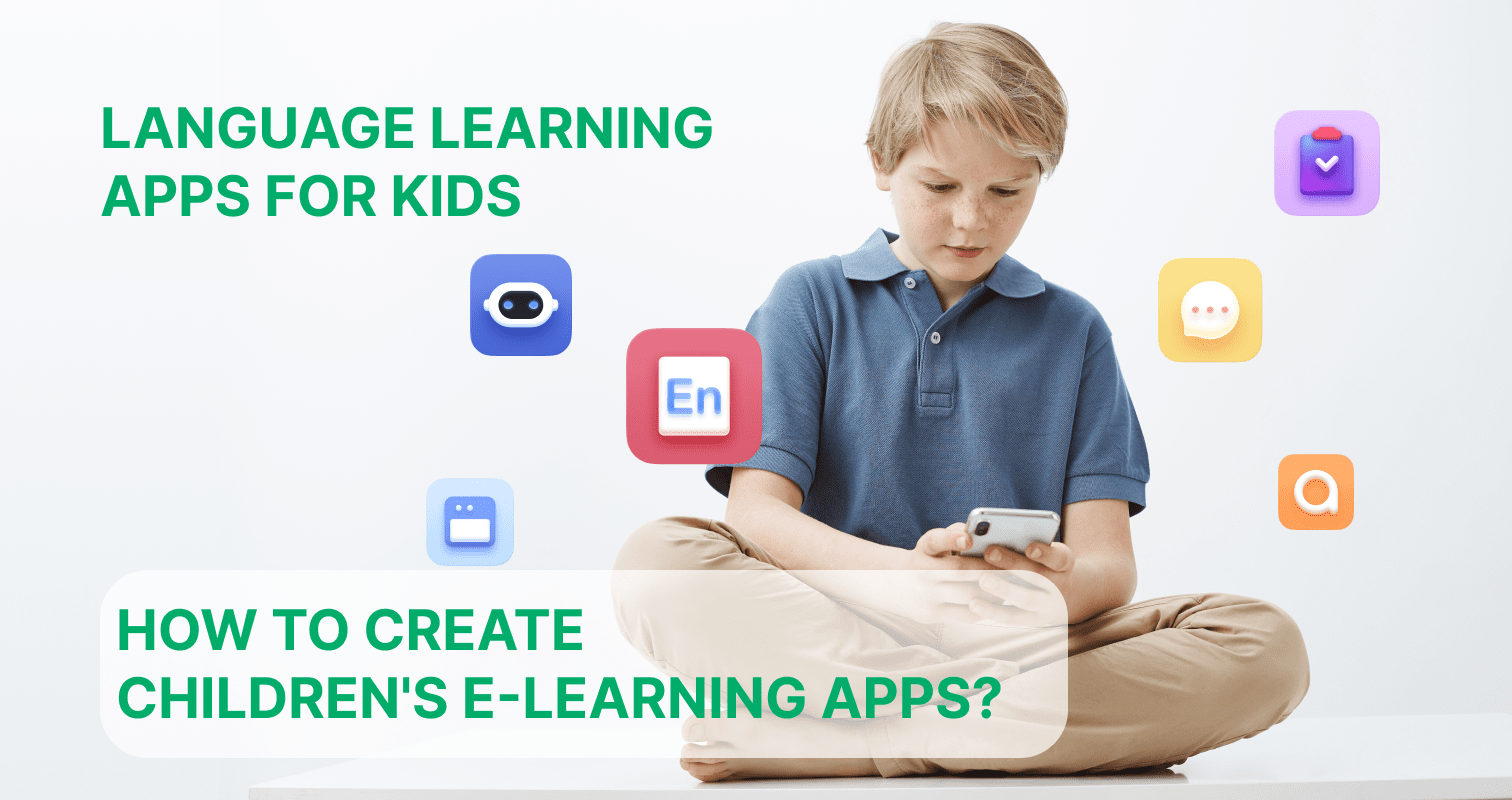
Many of us have always been learning foreign languages for various reasons – travel and meeting new people, career and business, self-improvement and fun, etc.
The best way to succeed in learning a language is to start with it as a kid. The age of 5-12 is the most productive time for everyone, as your brain absorbs any information fast and retains it for a long time.
Are you planning to create a language learning app that kids will love? Study the main aspects of such a startup before you contact the developers and discuss further details.
Statistically, 80% of young Europeans (aged 15-30) speak at least one foreign language. Many of them have learned it or improved their school knowledge with different kinds of apps and websites. The main benefits of E-learning are availability at any time and place, convenience, and low prices.
If you create an app like that, it can bring you a steady income – for instance, the global market of digital English learning solutions is the most profitable, with revenue estimated at over $4 billion in 2018 and predicted to reach $54.9 billion by 2027.
Duolingo is one of the most successful language learning apps for kids and adults. It has become world-famous and earned over $100 million for six years.
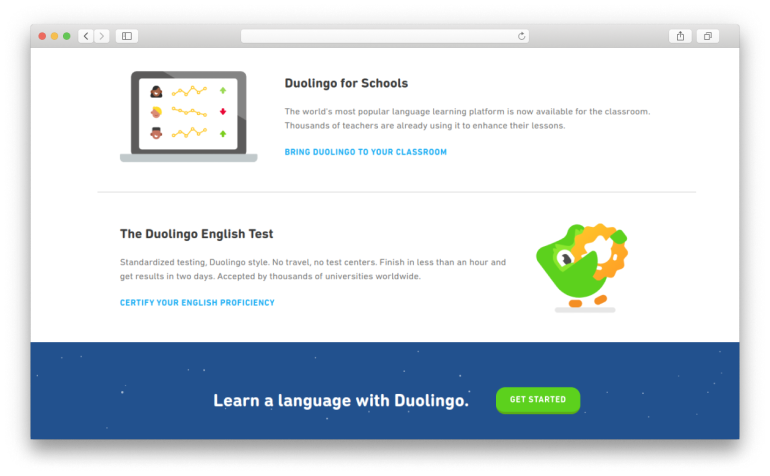
Duolingo is popular for individual and school learning
There are lots of other popular apps for children and teenagers helping them learn foreign languages. For example:
As you see, language apps can come in different forms. What kind of solution would you choose to create?
In the current market, you’ll find the following types of language learning apps and websites:
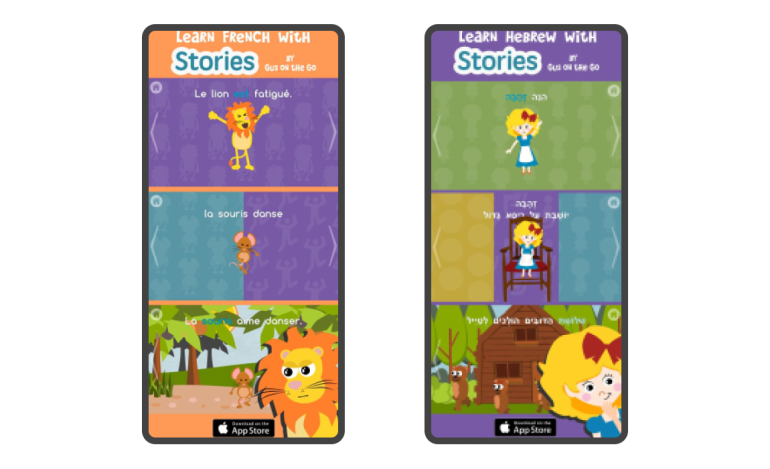
Gus Οn Τhe Go teaches languages through stories
Let’s find out how you can create your own language app for kids. There will be common challenges and must-have features. It’s time to learn more about them.
If you want to create a kids’ learning app to promote it in big online stores, getting lots of five-star reviews, you should ponder upon some critical points. We’ve collected ten helpful tips for your future product.
A mobile app for kids should contain only proven content and apply trustworthy teaching methods.
Keep the best quality of lessons and try your best to avoid mistakes. Remember: if users (parents) find a serious problem, it may disappoint them to the point of losing interest in your language learning app.
Don’t implement many courses at once, you might have a hard time carefully checking their quality. We recommend you seek help from experienced teachers, guidance counselors, and authors to create unique educational content that should be in a language learning app for kids.

EASY peasy helps kids learn languages through various educational content
You can apply the following types of language learning tasks for a kids’ app:
You should hire qualified professionals to create online lessons for your language learning app.
Moreover, you could create a feature that allows parents to find personal tutors for kids. It’s better if these teachers will be native speakers of the languages that you offer on your learning app. The tutors should have experience of working with kids of your target audience’s age.
Highly qualified teachers, as well as top-quality materials and great user experience, are the crucial points for your language learning app’s success.
One of the significant reasons for people to choose online learning is their lack of time for traditional classes. And the best learning apps are focused on giving learners a sense of quick achievement.
When people constantly see the desired results, they feel more motivated to continue the process and spend more time on an app. And in the case of language learning apps for kids, the power of quick achievements works perfectly.
Children get distracted more than teens and adults and that’s why they need additional motivation-creating techniques.
It’s also good to provide various separate types of language learning lessons – such intensives give the maximum in the shortest time and keep kids interested.
One of the best ways to provide young learners with fast visible results and motivate them is by applying as many elements of gamification as possible in a language learning app for kids.
If you carefully study the examples of well-known digital products from the previous section of our article, you’ll find all of them being highly gamified. Language apps like Gus Οn Τhe Go or Little Pim even have an exciting storyline and adorable characters that kids will love playing with.

Gus Οn Τhe Go teaches languages through adventures
We advise you to apply scores, progress bars, rewards, leaderboards, and other ways to constantly show real-time results. All these methods help in knowledge retention as well.
Normally, you launch your app with core functionality and a starter set of courses. This is your MVP – minimum viable product.
Then, you’ll expand and advance your language learning app, adding more courses and options. This is why you make sure to create a sufficient basis from the beginning.
The modular structure allows lots of easy changes and additions. Now, when you update your app, it won’t take much time and expense.
This approach works great with teens and adults as well, but for kids, especially the younger ones, visual content is essential. It draws and holds their attention, increases interest in a subject, and better explains difficult parts of language learning.
Nice and informative illustrations are the best to present new vocabulary and any other training program for young learners.
Remember about video content as well. Language learning apps for young kids may consist of video lessons entirely, and those videos should be engaging, informative, suitable for an age group’s psychological characteristics, well-produced, and generally fun.
Remember that kids’ attention is easily distracted and needs constant stimuli, so make sure to hire experienced designers and illustrators to create vivid, appealing, memorable content.
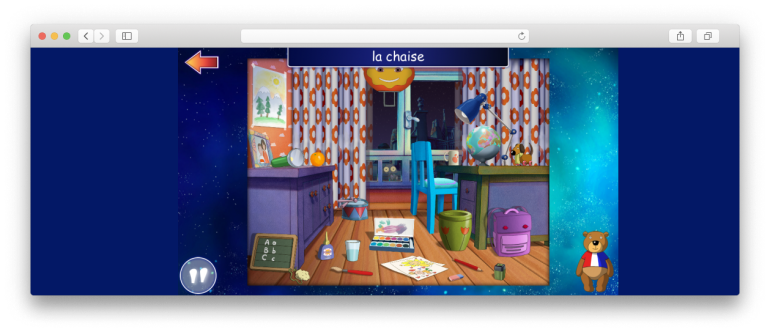
The app called "Laura’s Star – Learning Languages for Kids" makes a great example of professional design
Apart from illustrations for language learning purposes, you’ll need competent UX\UI designers to create convenient, easy-to-use navigation for your app. It’s preferable to hire specialists who already have relevant experience with learning websites and apps for kids.
You should create two-way communication with users, kids or parents. It helps find possible problems quickly and improve your language learning app. Users often leave feedback via Google Play/App Store.
Another great way is to give them an opportunity for reviewing in-app. Now you can find out why a user didn’t finish the learning process, where they got stuck, and what improvements you may bring to your app to fix these problems.
We advise you to make a feedback page easy and quick to use (pop-up window, premade answers to choose from), so that more users will leave their reviews.
Communication and a sense of belonging to a larger group are significant for learners of any language. Children usually participate in language learning activities with a supervising parent.
Give kids an opportunity to talk to each other in chats, make new friends based on their shared interests, and even compete with each other via leaderboards and challenges.
You can also create a parent forum on your app where you can get useful feedback about the learning process and organize consultations with teachers.
You’ll be able to reach the largest audience if you create a variety of courses on your app aimed at different age groups of kids and teens. It’s also an excellent idea to create separate systems for beginners (younger and older age), or for conversational skills improvement, etc.
You don’t have to add all possible programs at once, however. Remember your app’s modular architecture – with this universal basis, you’ll develop and add new courses and modules subsequently.
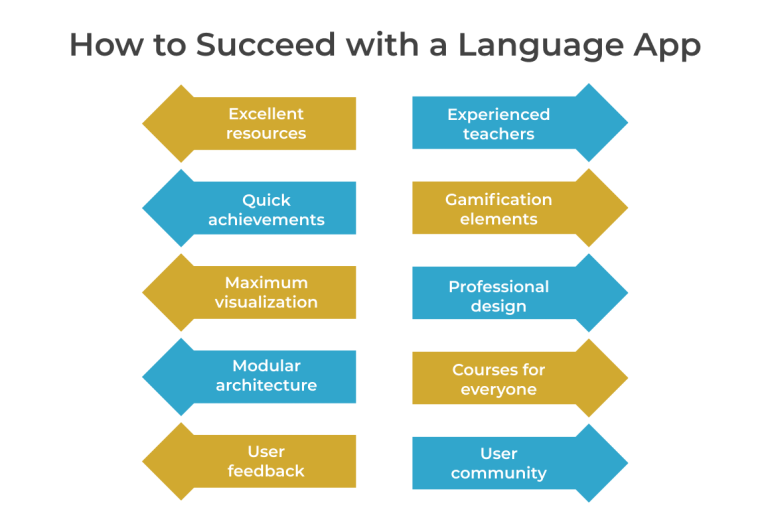
All the things to consider for your app
Let’s discover several examples of popular language learning apps for kids aged 5-13. There are some distinctive features and functions you’ll be interested in if you’re planning to create such an app.
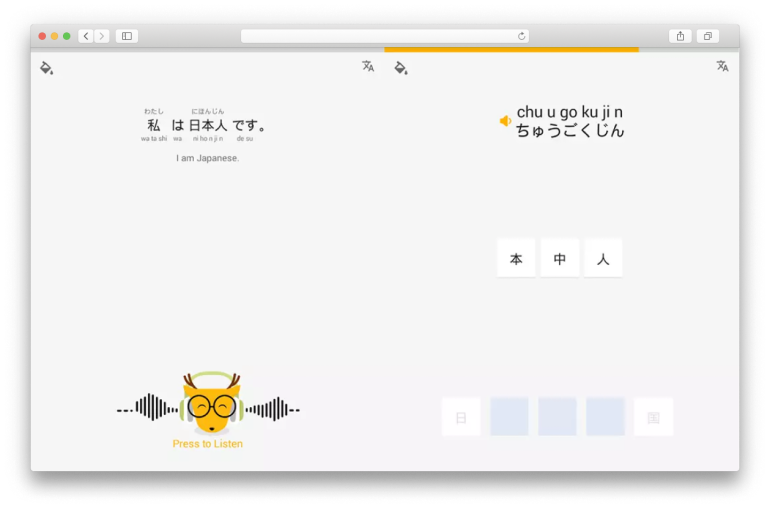
LingoDeer offers many languages for kids
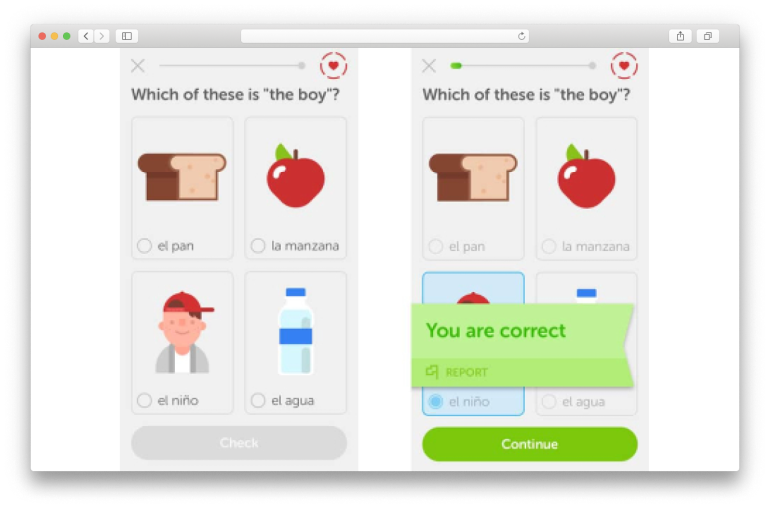
Duolingo offers digital flashcards and quizzes for kids to learn languages
The most popular kids’ language learning apps are available on all platforms and devices, including iPhone, iPod Touch, iPad, and Android. This is a fast way to reach the broadest possible audience.
There is a list of features you can implement to create an MVP. Then you will simply add new functions to make your app more and more advanced.
Authorization. Typically, a new user registers via email by creating a username and a password. You can give parents an opportunity to create accounts for their kids and for themselves on your language learning app. Everyone uses authorization to get to a User Profile, filled with basic information (name, age, gender, photo, languages to learn, language level, etc.)
Personalization options. Create a space for young learners by personalized features – avatars and story characters, individual design settings, personal vocabulary where they can add new words, dashboard with achievements and goals, and many other features that help kids or teens to better navigate your app and feel at home.
Visualized progress. It’s important for both kids and their parents to see what progress young learners have already made. You can implement progress bars and various kinds of rewards (crowns, gems, stars, etc.) or badges (for completing a course, for non-stop learning, for being active in communities, etc.) to visualize any kinds of achievements on your language learning app.
Online encouragement. You can use chatbots and digital assistants to support young learners through their way to language speaking skills. Artificial intelligence will monitor kids’ progress, help them when needed, and encourage them to try again after failure. You can also use push notifications to remind learners to come back to the fun or to finish some tasks.
Clear learning procedure. Invest in creating a well-designed user interface, friendly to learners’ needs and helping them start learning quickly and without problems. A distinctive feature of your app’s interface should be a dashboard. Kids and parents will use it to get all significant information about the whole language learning process – courses, achievements, updates, etc.
Transparent payments. When you charge users for some services on your app, it’s essential to apply clear and transparent payment options. We advise you to create integration with Paypal, Braintree, ApplePay, GooglePay, credit/debit cards, and other trustworthy and easy-in-use systems.
There are lots of ways of making money with your digital platform. The market leaders usually apply a combination of several business models.
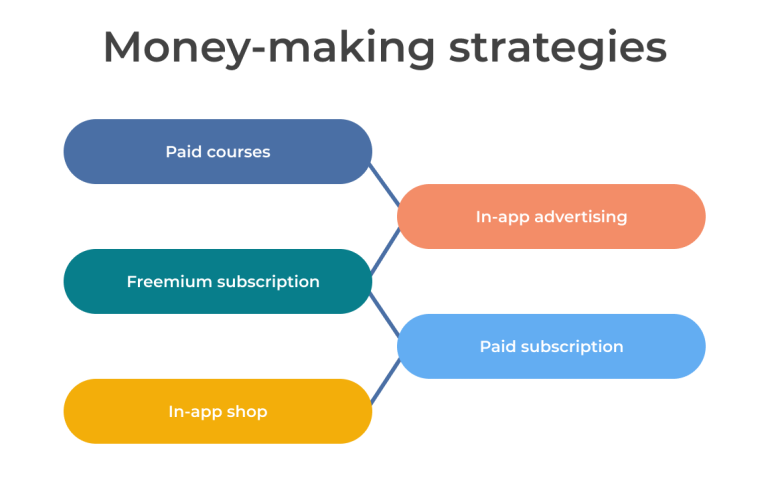
The main ways of an app's monetization
When you have an idea, you wish to turn it into the best digital solution. It means turning to experienced developers and designers who can implement all the crucial features of a language learning app for kids, creating a good basis so that later you could expand your project.
It usually takes from four up to six months to build the minimal functionality.
Here at ADEV, a kids’ language learning app will go through several important stages of development.
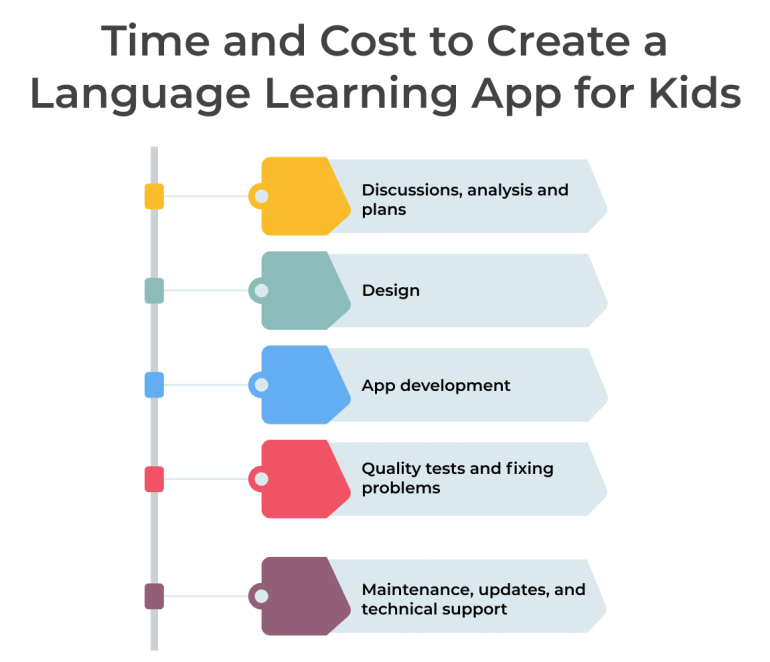
Stages of app development
| Stage | Time |
| Discussions, analysis, and plans | 80 hours |
| Design | 160 hours |
| App development | 720 hours |
| Tests and fixing problems | 120 hours |
| Maintenance, updates, and technical support | 40 hours a month |
Are you looking for the best quality within a reasonable pricing frame? Hire a development team from Eastern European countries. Depending on a kids’ learning language app complexity, it will cost from $30,000 to $60,000.
If you wish to create a language learning app for kids, prepare for a challenging job. You’ll need a well-thought conception, experienced authors of training materials, and a team of qualified app developers.
Invest in professionals’ work to get an excellent end-product for the competitive E-learning market. We hope that our suggestions are helpful for creating a kids’ language learning app. Start with deciding what kind of solution to develop and how much to budget for it.
Here at ADEV, we offer top-quality app development services for E-learning and other industries. Don’t hesitate to ask us any questions, and we’ll find the best way to carry out your idea.
What types of language learning apps for kids are there?
There are digital courses like Duolingo, repetition apps like Drops (they are often flashcards-based), E-learning games like Gus Οn Τhe Go, and video-based apps like Little Pim.
What features are must-have for kids' learning app?
Authorization; Visual appeal; Gamification; Personalization options; Visualized progress; Online encouragement; Clear learning procedure; Transparent payments.
What are some money-making strategies for E-learning apps?
Monetization may be carried out through paid courses, in-app ads, freemium subscriptions, paid subscriptions, and in-app shops.
How much does it cost to create a language learning app for children?
If you search for the best quality within a reasonable pricing frame, it's best to hire a development team from Eastern Europe or Russia. Depending on the app's complexity, it will cost from $30,000 to $60,000.
How much time does it take to build a language learning app?
It typically takes three months to develop the first (MVP) version of the product that's ready for real users.

